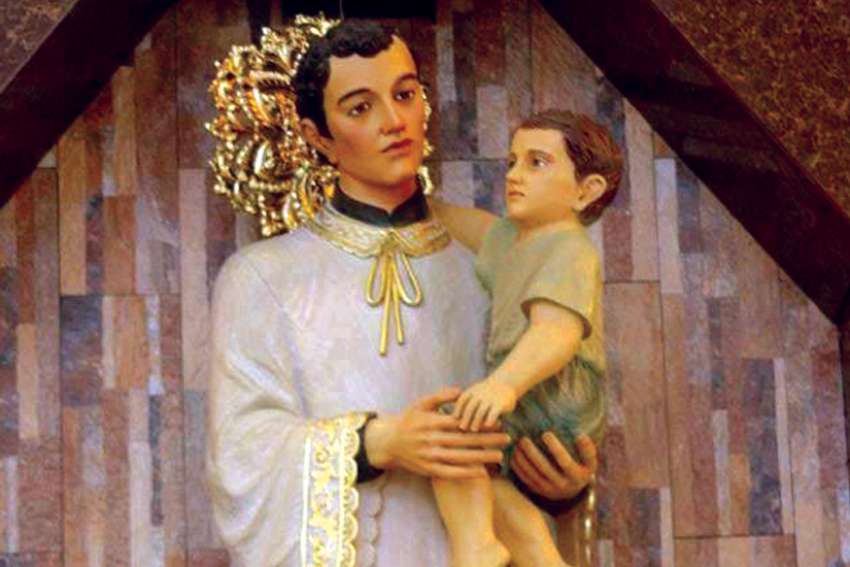St. Aloysius was born to nobility in Mantua, Italy, on March 9, 1568 as Luigi Gonzaga. At nine, the Italian youth heard his calling and dedicated his life to God. Inspired by saints and Jesuit missionaries in India, he gave up his life of luxury and wealth to serve the poor, the hungry and the sick. Upon turning 18, he joined the Society of Jesus (Jesuits), opting to be called by the Latin translation of his name: Aloysius.
In statues and portraits, St. Aloysius is usually depicted wearing a black cassock and white surplice standing next to an angel. This image led people to believe he was “soft and coy.”
“Artists during that time (approximately the 17th and 18th centuries) incorporated feminine attributes in the portrayal of holy men,” said Vincent Loiz, a hagiographer and senior high school teacher from the Jesuit secondary school Ateneo de Manila University in the Philippines. “The femininity of masculine personages is linked to the belief that women are the vessels of virtues.”
Contrary to this popular understanding, St. Aloysius was not a mild and meek individual, says Fr. John Meehan SJ, a professor, historian and president of the University of Sudbury.
“Aloysius was a courageous young person. He followed his faith, his love of God and his vocation, even when this meant opposing his father’s wishes, renouncing his life of privilege and inheritance to serve God and risk his life by serving plague victims in Rome,” said Meehan.
On June 21, 1591, at age 23, he died after contracting the plague while tending to the sick — just six months before his ordination. In 1726, he was canonized; three years later Pope Benedict XIII declared St. Aloysius as the patron saint of young adults; in 1926, Pope Pius XI named him as patron of all Christian youth.
His unselfish work among the sick led St. Pope John Paul in 1991 to declare him the patron saint of those living with HIV/AIDS.
Meehan and Loiz say we can turn to St. Aloysius, just as they do, to pray for his guidance during trying times, such as this COVID-19 pandemic.
Loiz says St. Aloysius can guide and teach us to “reach out to those ostracized by society because of illness, to make us understand that people need to be treated, cared for and loved.”
Meehan says St. Aloysius motivates us to have “holy boldness” and strive for “holiness (which) led him to serve others by reaching out to the poor, marginalized and suffering.
“He inspires us with his courage, his desire for holiness and his solidarity with the suffering,” said Meehan. “He is counter-cultural in reminding us of our calling to be faithful witnesses of our faith and dedicated servants to the poor and marginalized in a culture of indifference.”
(Ducepec, 22, is a Bachelor of Science undergraduate student at the University of Toronto studying anthropology.)


